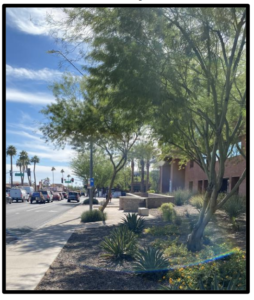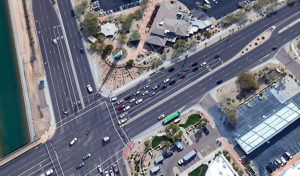Will the metro Phoenix freeway system be able to handle the expected population increase?
By Paul Basha, traffic engineer, Summit Land Management
According to the Maricopa Association of Governments, metropolitan Phoenix had a population of 4.65 million in 2017 and is projected to have a population of 7.70 million by 2050. (And 60 Minutes reported this past Sunday that 50% of the children born in the United States in 2020 will be alive in 2124.)
Meaning metropolitan Phoenix, as defined by the Maricopa Association of Governments, will experience an annual population increase of approximately 2% for the next three decades.
According to the United States Department of Transportation, Federal Highway Administration, Office of Highway Policy Information for 2017:

Metropolitan Phoenix ranks 16th for freeway lane-miles and 61st for daily vehicles-per-freeway-lane-mile.
Also according to the United States Department of Transportation, Federal Highway Administration, Office of Highway Policy Information for 2017:

(According to the Federal Highway Administration, in 2017, metropolitan Phoenix population ranks 12th at 3.6 million. The Maricopa Association of Governments apparently considers a much larger area as metropolitan Phoenix than does the Federal Highway Administration.)
Generally, the metropolitan Chicago population in 2017 is closest to the projected metropolitan Phoenix population in 2050. In 2017, Chicago had 50% more freeway lane-miles and 24% more daily vehicle-miles driven on freeways than Phoenix.
Comparatively, if metropolitan Phoenix increases its freeway lane-miles by 50% before 2050, we’ll be just as congested then as Chicago is now. According to the Texas Transportation Institute Urban Mobility Report, Chicago ranks 10th of Very Large Urban Areas with 73 hours of delay-per-car-per-year. Phoenix ranks 18th with 62 hours of delay-per-car-per-year. If metropolitan Phoenix increases its freeway lane-miles by 50%, those of us in Phoenix in 2050 will experience an 18% increase in delay compared to now.
Oh, wait, not really, because in 2015 in Chicago, 27.6% of commuters used train or bus, ranking 7th in the country. Phoenix does not make the United States top 50 bus and rail commuter percentage. In January 2020, Phoenix had less than 5% of commuters using train or bus. So, for Phoenix to have only an 18% delay increase by 2050, we would need to increase our bus and rail commuting by more than 500%. Chicago has approximately 1,800 miles of train and bus routes, Phoenix has an estimated 600 miles of rail and bus routes. So, for Phoenix to have only an 18% delay increase by 2050, we would need to increase our bus and rail route miles by 300%.
Will the metropolitan Phoenix street, bus, and rail system in 2050 be able to accommodate the anticipated population in 2050? Sure, if we build many more lane-miles of freeway, provide many more miles of bus routes, and build many more miles of light rail track.
Curious about something traffic? Call or e-mail Paul at (480) 505-3931 and pbasha@summitlandmgmt.com.




